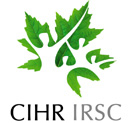Reaching out through social media
The crowdfunding approach that the Grays have taken — in their case, asking a large group of people, through social media and other communications, to donate $1 for their foundation — has taken off in the last several years.
In the case of rare diseases, the fundraisers are often parents of children who are affected, but they can also be the researchers working toward a cure, said Nick Dragojlovic, a postdoctoral fellow at the University of British Columbia Faculty of Pharmaceutical Sciences who studies the role of crowdfunding in drug development. The money raised can either go to basic science research or clinical studies, as in the case of the GoFundMe campaign “Saving Eliza” for a four-year-old girl who has a fatal genetic disease called Sanfilippo Syndrome.
Although crowdfunding campaigns have successfully raised the funds for clinical trials, they have not as yet led to new medications on the market, Dragojlovic said. “This is perhaps not surprising, given the long development timelines in drug development and the fact that crowdfunding for research is a relatively new trend,” he added.
The money that the Charlotte and Gwenyth Gray Foundation raises could go to a number of basic science initiatives, Kristen said, including the work at Sanford Research on cell-based experiments as well as a research program in New Zealand studying Batten disease in sheep.
“The money that we raise is not going to help just our children, it will help other families that have CLN6 (mutations), and in the broader scope, Batten disease and other neurological diseases,” Kristen said.
Click here to read the full article from the June 12, 2015, Special to CNN








